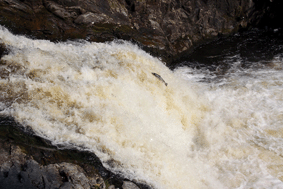Monitoring fluvial water chemistry for trend detection: hydrological variability masks trends in datasets covering fewer than 12 years†
Abstract
This paper sub-samples four 35 year

* Corresponding authors
a
Department of Civil Engineering, University of Bristol, Queen's Building, University Walk, Tyndall's Park, Bristol, UK
E-mail:
nicholas.howden@bristol.ac.uk
b Department of Geography, Durham University, Durham, UK
c Department of Earth Sciences, Durham University, Durham, UK
d Department of Natural Resources, Cranfield University, Cranfield, Bedfordshire, UK
This paper sub-samples four 35 year

 Please wait while we load your content...
Something went wrong. Try again?
Please wait while we load your content...
Something went wrong. Try again?
N. J. K. Howden, T. P. Burt, F. Worrall and M. J. Whelan, J. Environ. Monit., 2011, 13, 514 DOI: 10.1039/C0EM00722F
To request permission to reproduce material from this article, please go to the Copyright Clearance Center request page.
If you are an author contributing to an RSC publication, you do not need to request permission provided correct acknowledgement is given.
If you are the author of this article, you do not need to request permission to reproduce figures and diagrams provided correct acknowledgement is given. If you want to reproduce the whole article in a third-party publication (excluding your thesis/dissertation for which permission is not required) please go to the Copyright Clearance Center request page.
Read more about how to correctly acknowledge RSC content.
 Fetching data from CrossRef.
Fetching data from CrossRef.
This may take some time to load.
Loading related content
